AMD recently launched the world’s first desktop AI processor: the Ryzen 8000G series, marking the official entry of desktop PCs into the AI era. The Ryzen 8000G has garnered widespread attention from gamers and is selling hotly, poised to become the next generation’s blockbuster CPU. So, how powerful is the AI functionality of the Ryzen 8000G, and can it bring a different experience to our daily applications? Let’s dive into the practical understanding of this.
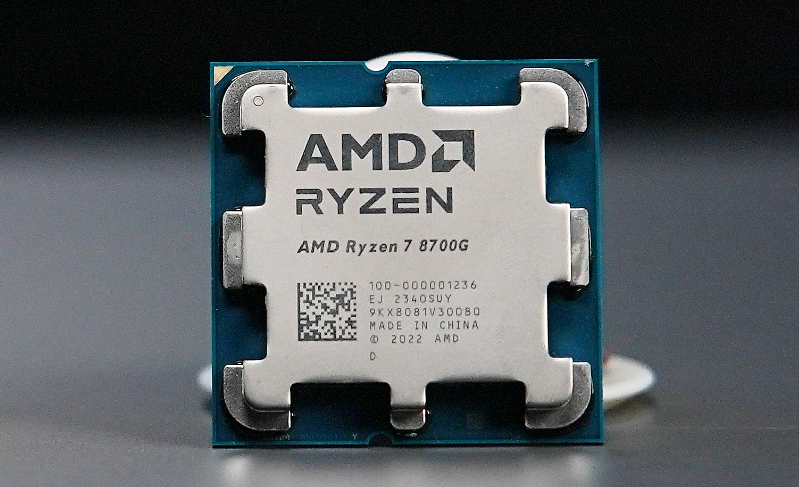
The World’s First Desktop AI Processor Powered by the Ryzen AI Engine
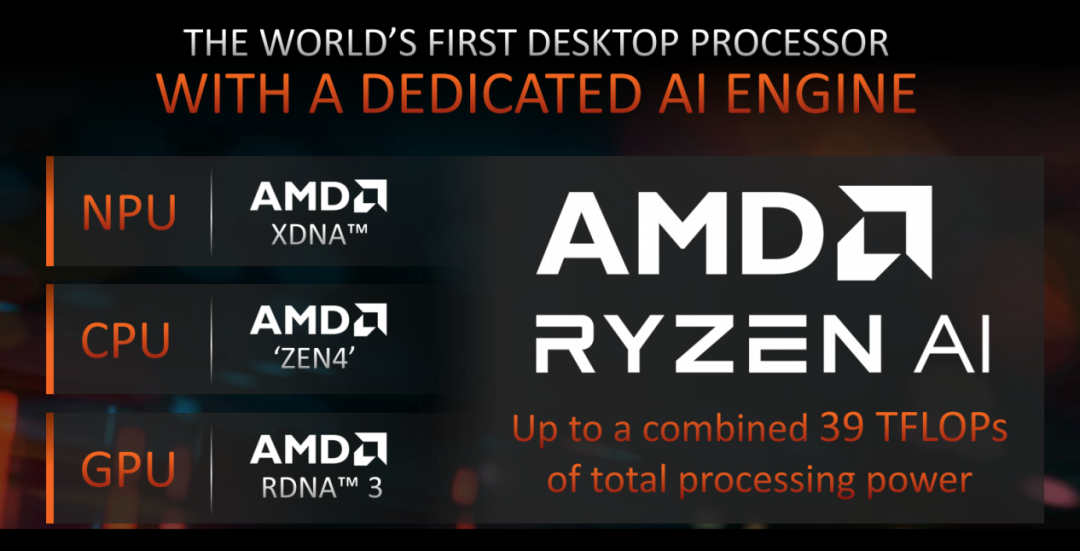
Changes in both hardware and application environments can make one feel that the AI era has arrived. With local AI computing’s advantages in efficiency and convenience, many daily applications and future versions of the Windows system will utilize the AI computing capabilities of computers. Therefore, AMD was the first to launch the Ryzen 7040 series processors with an integrated Ryzen AI engine on mobile platforms last year, marking the first shot for the X86 platform’s entry into AI.
The Ryzen 8000G series is the pioneer of AMD’s desktop AI PC strategy. Like the Ryzen 8040 mobile processor launched this year, the Ryzen 8000G series features an NPU built with the Ryzen AI engine, Zen4 architecture processor cores, and RDNA3 integrated graphics, forming a three-in-one AI acceleration solution that makes the Ryzen 8000G the world’s first all-around AI processor for desktops. Additionally, since it is positioned for desktop platforms, it has a broader power setting, allowing for more thorough overall performance release. According to AMD’s official data, the integrated computing power of the Ryzen 8000G reaches up to 39 TFLOPS.
Currently, the Ryzen 8000G is selling well in the market, becoming an AI PC installation star that everyone can access. However, how does the Ryzen 8000G perform in actual AI applications? Let’s take the Ryzen 7 8700G as an example and give it a practical experience.
Practical AI Application: NPU Creates New Ways, GPU Efficiency is Impressive
Test PlatformProcessor:AMD Ryzen 7 8700GMainboard:ROG STRIX B650-A GAMING WIFIGraphics Card:Radeon 780M (integrated)Memory:Kingston DDR5 6000 16GB×2Storage:WD_BLACK SN850X 2TBPower Supply:ROG Thor 1200WOperating System:Windows 11 23H2
First of all, as the first processor with an integrated AI engine on the desktop platform, many are particularly interested in how the NPU of the Ryzen 8000G works. In fact, there are already quite a few applications that can recognize and utilize the NPU of the Ryzen 8000G, and here we choose a representative application as an example.
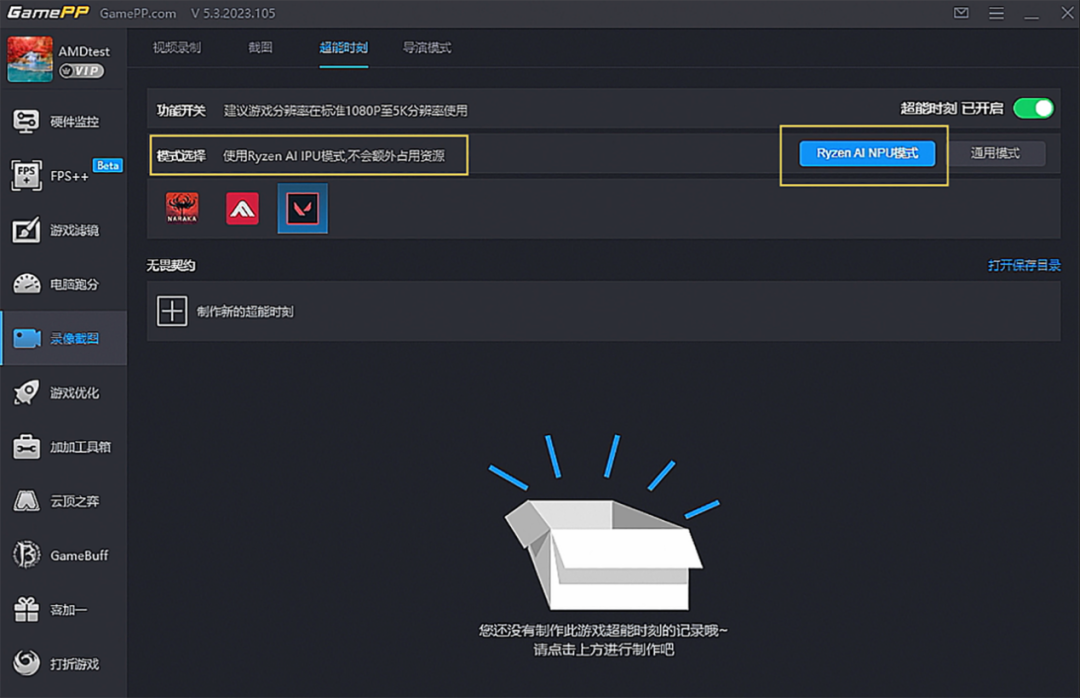
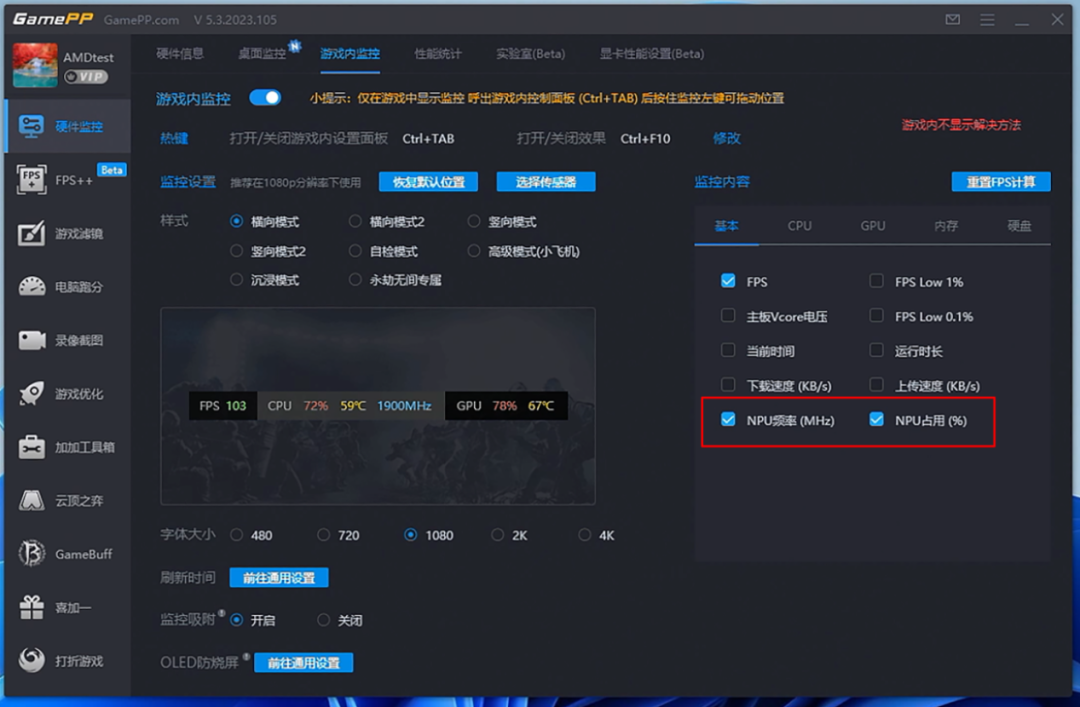
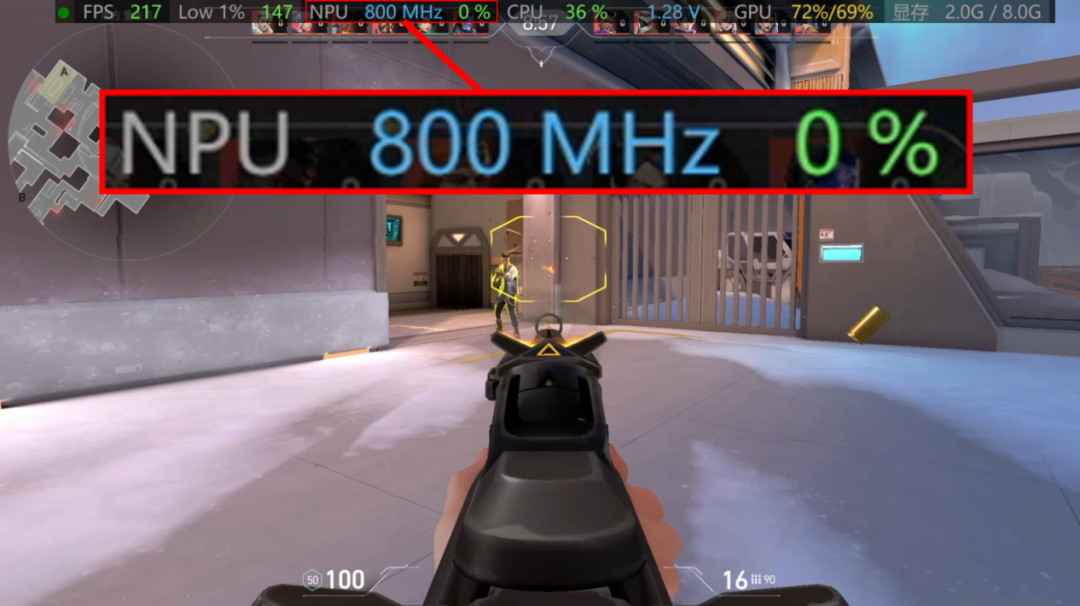

Currently, the game assistant tool “Game Booster” has added support for the built-in NPU of the Ryzen 8000G in its test version. In the program interface’s super power moment menu, users can select the Ryzen AI NPU mode to record exciting kill videos. Using the NPU does not consume additional system resources, ensuring that players’ smooth gaming experience is not interrupted. Additionally, the well-known hardware monitoring tool HWINFO64 has also added monitoring functions for NPU frequency and usage rate, allowing players to visualize the changes in these values.
Based on actual experience, when the NPU frequency and usage rate display is opened in the in-game monitoring of “Game Booster”, a screenshot from “Valorant” shows that the NPU operating frequency is 800MHz with a usage rate of 0%. From the HWINFO64 monitoring graph, it can be seen that during the recording of kill videos, the NPU’s usage rate increases.
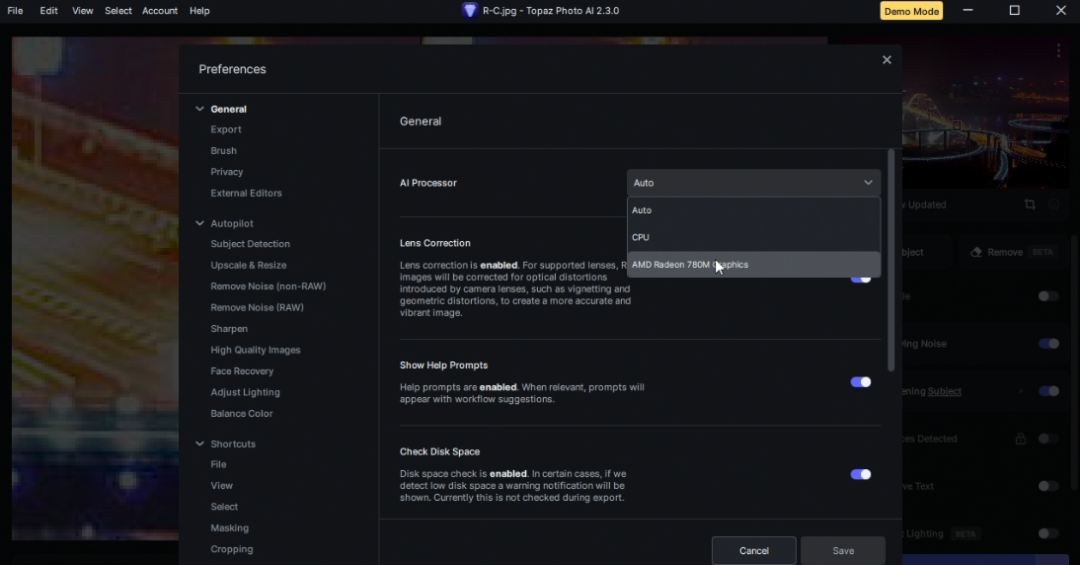
As an all-around AI processor, the Ryzen 8000G clearly does not rely solely on the Ryzen AI NPU for AI acceleration; its built-in RDNA3 integrated graphics also perform exceptionally well in AI acceleration and are supported by numerous AI application software. As shown in the image, Topaz Photo AI can choose to use the Radeon 780M integrated graphics for acceleration, and tests show that using the Radeon 780M is more efficient than using the processor alone for acceleration.
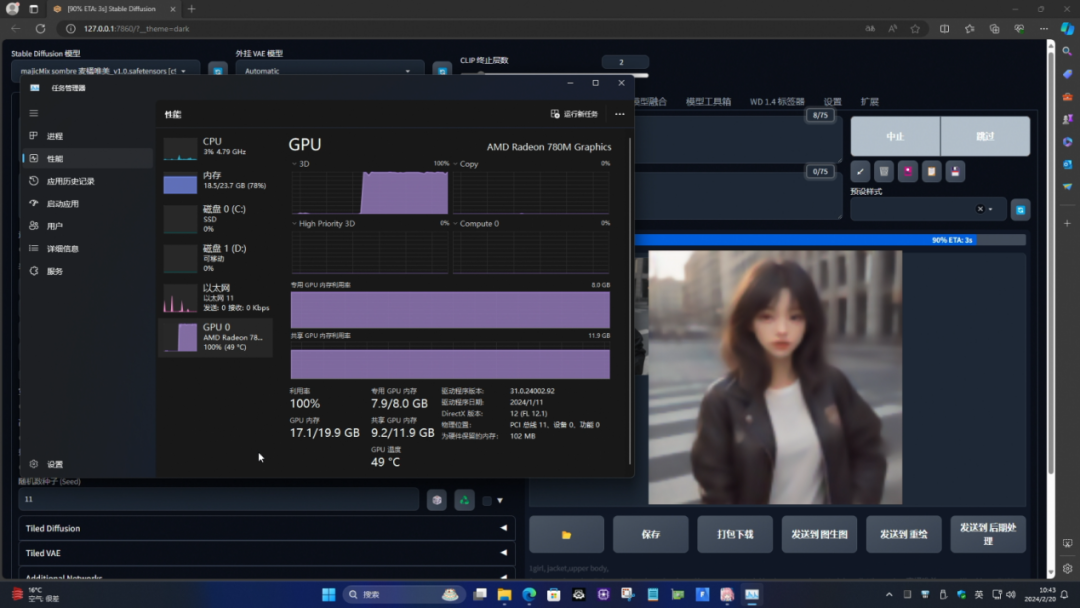
Of course, the biggest selling point of the RDNA3 integrated graphics is the support for Stable Diffusion image generation, which not only supports DirectML mode but can also double efficiency through Olive optimization models. Additionally, the integrated graphics of the Ryzen 8000G can manually specify video memory capacity in the motherboard BIOS, allowing for a maximum allocation of 16GB of video memory when the system is equipped with 32GB of RAM. This larger video memory can be used for higher resolution image generation in Stable Diffusion, which is a unique advantage of AMD’s integrated graphics.
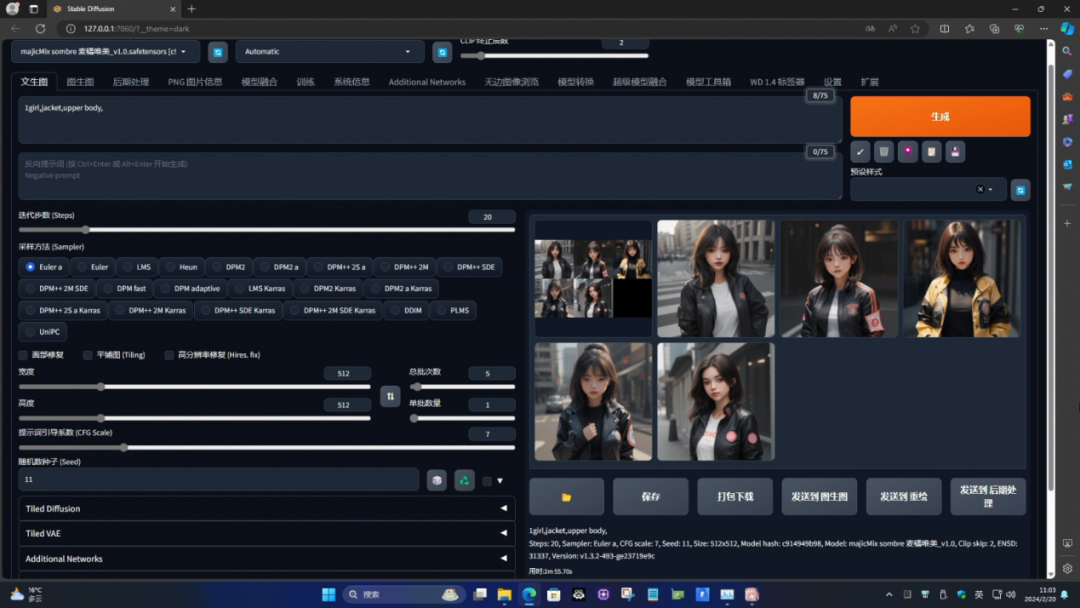

We used the Mai Orange Beautiful V1.0 model for SD image generation testing, with 20 iterations, CFG of 7, sampling method of Euler a, and a resolution of 512×512. It can be seen that the Radeon 780M generates about 1.7 images per minute, and even generating 5 batches continuously does not cause a memory overflow crash. This is something that not only competitors’ integrated graphics cannot achieve, but even some entry-level discrete graphics cards would crash here, highlighting the benefits of the Radeon 780M’s support for a maximum of 16GB of large video memory. Additionally, the image generation speed of the Radeon 780M is already equivalent to 5-6 times that of flagship processors, with a significant efficiency advantage, making it a highly cost-effective solution for users with lightweight AI image generation needs.
Therefore, in summary, the ultimate integration of the CPU (Zen4) + NPU (XDNA) + GPU (RDNA3) in the AI acceleration solution of the Ryzen 8000G can indeed achieve high compatibility, high efficiency, and high performance for comprehensive AI acceleration, making it the most versatile desktop AI processor available today.
Conclusion: Get the Ryzen 8000G and Enjoy Efficient All-Around AI Acceleration Immediately!
To summarize briefly, as AI applications gradually become popular, the AI PC era has arrived. AMD extends its leading advantages in AI applications on mobile platforms to the desktop platform with the Ryzen 8000G, which has both an efficient AI engine and the strongest integrated graphics, making it the only choice for an all-around desktop AI processor today. Therefore, AMD has temporarily outpaced competitors in the all-around AI race. As a pioneer of desktop AI processors, the Ryzen 8000G sets a benchmark for future competitors.
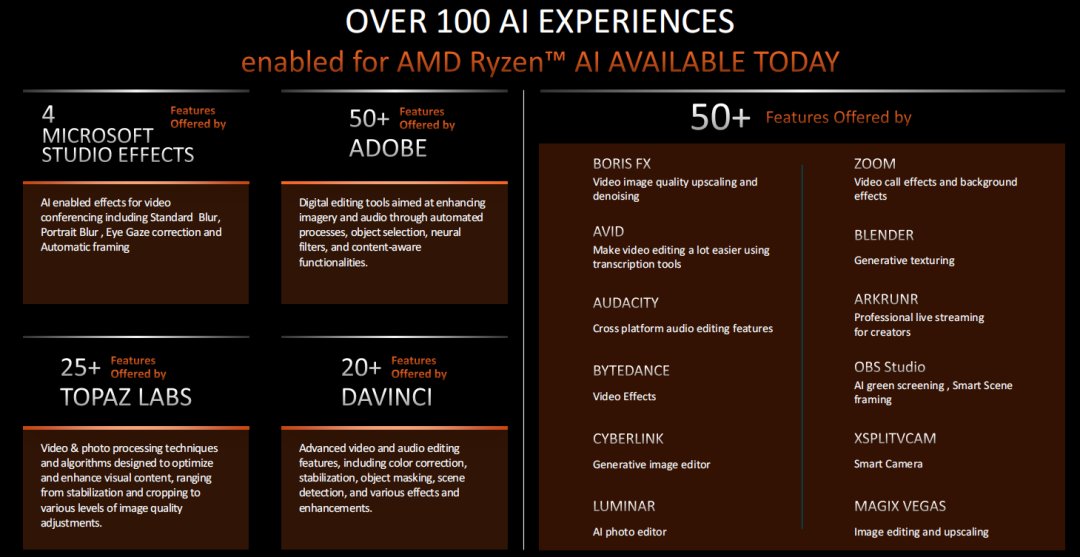
Currently, more than 100 AI applications or features have provided support for the AMD Ryzen AI engine, including 4 Microsoft Studio effects, over 50 Adobe software features, over 25 TOPAZ LABS software features, over 20 DaVinci software features, and more than 50 various mainstream productivity software and features. This indicates that the development of the Ryzen AI ecosystem is very rapid, and it has gradually covered most of the application areas in our daily work.
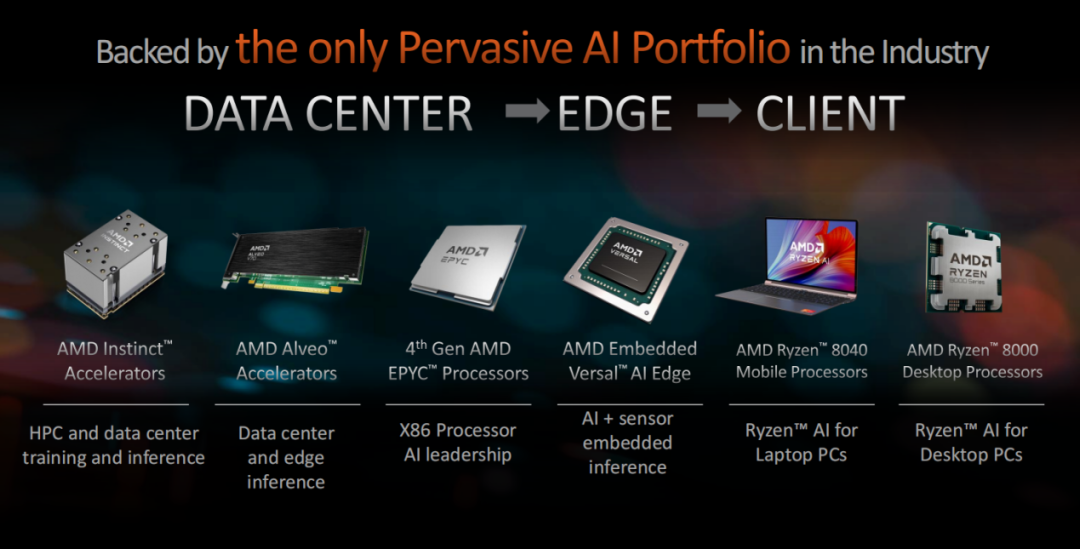
Moreover, the completion of the Ryzen AI processor layout signifies that AMD now has the most comprehensive AI solution in the industry, perfectly covering all platforms from data centers, edge computing to client-side. It boasts the Instinct accelerators for HPC and data centers, Alevo accelerator cards for data centers and edge computing, the fourth generation EPYC processors with leading performance, embedded Versal AI Edge, and the Ryzen 8000 series processors—currently, no other manufacturer in the industry has such a comprehensive AI product line. In summary, the Ryzen 8000G series desktop processors not only possess powerful comprehensive AI computing capabilities but also have significant potential for ecosystem growth, which is a unique core advantage of AMD in AI.
What is closely related to us, the general users, is that AI will be one of the core features of the upcoming new version of the Windows operating system, deeply participating in performance allocation, operational assistance, and more. With the help of AI, the system can learn and predict users’ daily usage habits, providing faster response speeds for applications; intelligently judging users’ usage scenarios based on the content displayed on the screen and optimizing system settings. Additionally, AI can help users avoid fraudulent websites and messages, quickly find the information they need. With AI’s assistance, users can use their computers more easily. Moreover, based on the natural language understanding capabilities of large AI models, the new version of Windows is expected to deploy a truly mature voice assistant, integrating with underlying functions to achieve real voice control of the computer.
To enjoy these features as soon as possible, you must have a PC processor with an integrated AI engine, and currently, whether on mobile or desktop platforms, Ryzen processors with the Ryzen AI engine NPU are the preferred solutions, with the Ryzen 8000G being the only choice for enjoying comprehensive AI acceleration on the desktop platform.

Next, let’s take a look at the recent hot configuration of the Ryzen 7 8700G compared to the popular Core i5 + GTX 1650 discrete graphics configuration on e-commerce platforms. From the overall price perspective, the Ryzen 7 8700G is currently hot-selling, with e-commerce platforms offering value packages for the processor + motherboard, further highlighting its cost-effectiveness, even having a price advantage of 49 yuan over the similarly positioned Core i5 + GTX 1650 configuration. Additionally, comparing the practicality and upgrade space of these two configurations, the Ryzen 7 8700G system is superior. After all, not only does the Radeon 780M integrated graphics perform better than the GTX 1650 discrete graphics in new games with the DX12U engine, but it can also seamlessly upgrade to any powerful discrete graphics (the integrated graphics can be used simultaneously, and even performance can be enhanced through the AFMF function). In contrast, the Core i5 + GTX 1650 configuration cannot achieve this, as the GTX 1650 discrete graphics has already occupied the PCIe 5.0 graphics slot, meaning that future upgrades to powerful discrete graphics would lead to the GTX 1650 being obsolete, essentially wasting the investment, which is not cost-effective.
In summary, building a mainstream desktop now with the Ryzen 7 8700G not only allows you to enter the AI era ahead of time, providing efficient acceleration with the NPU in various future AI applications but also offers better upgradeability, practicality, and outstanding cost performance, making it truly worth considering for players.
Editor:Xiong Le
·END·